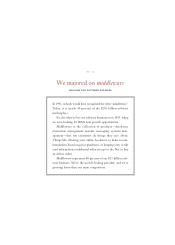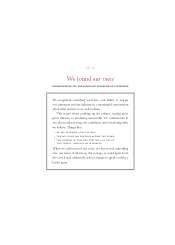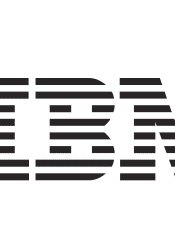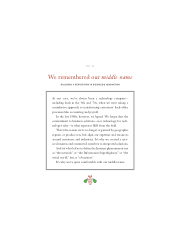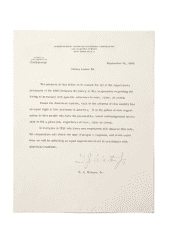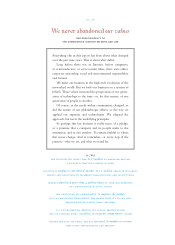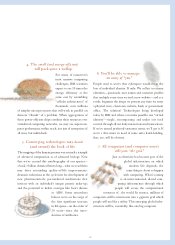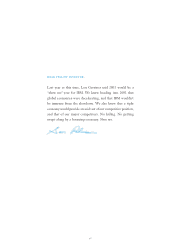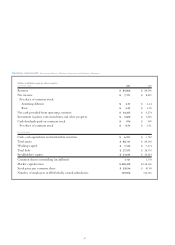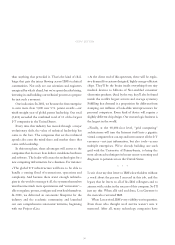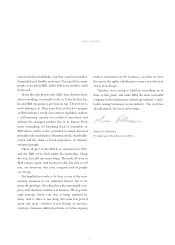IBM 2001 Annual Report Download - page 45
Download and view the complete annual report
Please find page 45 of the 2001 IBM annual report below. You can navigate through the pages in the report by either clicking on the pages listed below, or by using the keyword search tool below to find specific information within the annual report.
43
4. The small (and energy-efficient)
will pack quite a wallop.
For many of tomorrow’s
most massive computing
challenges, IBM scientists
expect to see 10 times the
energy efficiency at the
same cost by assembling
“cellular architectures” of
thousands, even millions
of simpler microprocessors that will work in parallel on
discrete “chunks” of a problem. When aggregations of
these power-efficient chips combine their resources over
virtualized computing networks, we may see supercom-
puter performance within reach, not just of enterprises of
all sizes, but individuals.
5. Converging technologies may decode
(and extend) the book of life.
The mapping of the human genome was as much a triumph
of advanced computation as of advanced biology. Now
that we’ve created this autobiography of our species
—
a book 3 billion chemical letters long
—
what we read there
may drive astounding quality-of-life improvements:
dramatic reductions in the cycle time for development of
new pharmaceuticals; personalized medications that
interact with an individual’s unique genetic make-up;
and the potential to defeat scourges like heart disease
or AIDS. Some researchers
believe we’re on the verge of
the first significant increase
in life spans
—
on the order of
20 years
—
since the intro-
duction of antibiotics.
6. You’ll be able to manage
an army of “you.”
People used to worry that cyberspace would mean the
loss of individual identity. If only. We collect too many
identities
—
passwords, user names and customer profiles
that multiply every time we surf a new website
—
and as a
result, fragment the image we present any time we enter
a physical store, classroom, website, bank, or government
office. The solution? Technologies being developed
today by IBM and others can make possible one “virtual
identity”
—
single, encompassing and under our total
control through all our daily interactions and transactions.
If we’ve earned preferred-customer status, we’ll get it. If
we’re a first-timer in need of some extra hand-holding,
that, too, will be obvious.
7. All computers (and computer users)
will join “the grid.”
Just as electricity has become part of the
global infrastructure on which
modern life depends, the
same thing is about to happen
with computing. What’s coming
is an interconnected, shared com-
puting infrastructure through which
people will access the computational
resources of…the world. In essence, millions of
computers will be interwoven into a gigantic grid which
people will use like a utility. This emerging global infra-
structure will be, essentially, like one big computer.


